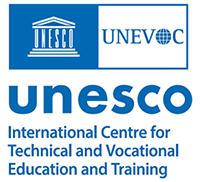
The UNESCO-UNEVOC International Centre: Who We Are | What We Do | Working With Us | Get in Touch
The UNEVOC Network: Learn About the Network | UNEVOC Network Directory
For Members: UNEVOC Centre Dashboard
Thematic Areas: Inclusion and Youth | Digital Transformation | Private Sector Engagement | SDGs and Greening TVET
Our Key Programmes & Projects: BILT: Bridging Innovation and Learning in TVET | Building TVET resilience | TVET Leadership Programme | WYSD: World Youth Skills Day
Past Activities: COVID-19 response | i-hubs project | TVET Global Forums | Virtual Conferences | YEM Knowledge Portal
Our Services & Resources: Publications | TVET Forum | TVET Country Profiles | TVETipedia Glossary | Innovative and Promising Practices | Toolkits for TVET Providers | Entrepreneurial Learning Guide
Events: Major TVET Events | UNEVOC Network News
The DACUM Model is an engaging and systematic way to:
The foundation stone of the model is the DACUM Analysis. Universally recognized for its accuracy, thoroughness and cost effectiveness, the DACUM Analysis has become a standard in many organizations, across all sectors.
DACUM’s main users are employers, training providers and governments.
DACUM is an acronym for developing a curriculum. It is a one or two day storyboarding process that provides a picture of what the worker does in terms of duties, tasks, knowledge, skills, traits and in some cases the tools the worker uses. The information is presented in graphic chart form and can include information on critical and frequently performed tasks and the training needs of workers.
Developing a curriculum is a quick and cost-effective method of occupational analysis that uses a focus group to facilitate a storyboarding process in order to conduct a thorough analysis of a given occupation.